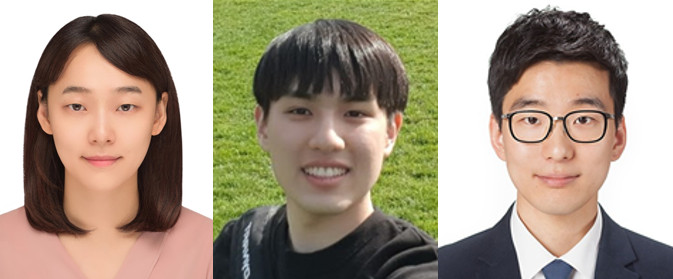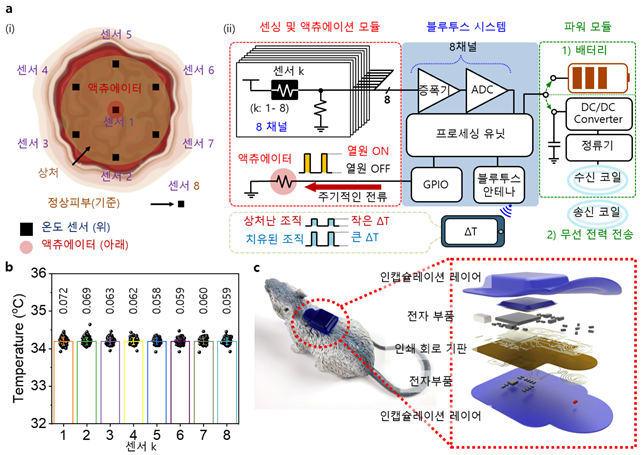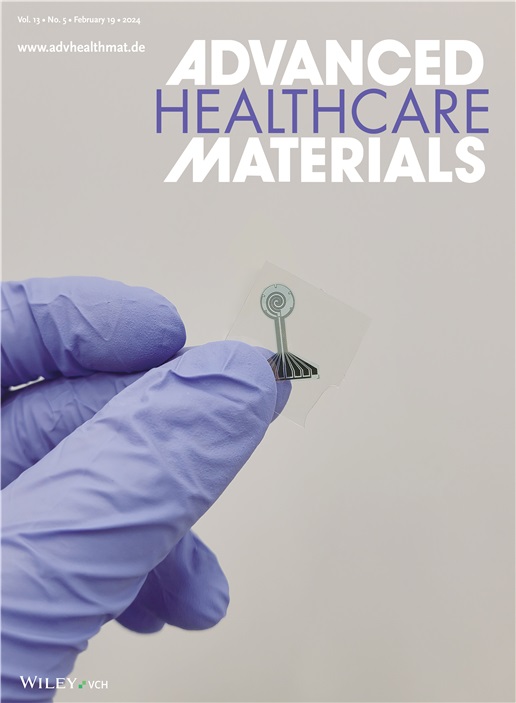Professor Kwon Kyeongha’s Research Team Develops Smart Healthcare Device for Monitoring Chronic Wounds for Monitoring Chronic Wounds in Diabetes Patients

< (Left to right) KAIST Professor of Electrical and Electronic Engineering Kyeongha Kwon, Ph.D. Candidate Youngmin Sim, and Chung-Ang University Professor of Advanced Materials Engineering Hanjun Ryu >
Professor Kwon Kyeongha’s research team has developed a wireless system capable of accurate and direct monitoring of chronic wound healing process by tracking the spatiotemporal temperature changes and thermal transfer characteristics of injuries caused by diabetes. Professor Kwon Kyeongha’s research team announced on the 5th that they have developed the digital healthcare system in collaboration with Professor Hanjun Ryu of Chung-Ang University.
As the skin serves as a barrier to protect the human body from harmful substances, skin damage in patients under intensive care can lead to serious health risks associated with infection. Chronic wounds are especially common in diabetes patients, who suffer from abnormal blood circulation and deteriorated wound healing processes. Just in the United States alone, billions of dollars in medical expenses are spent annually for the regeneration of such chronic wounds. Although there are various methods to promote wound healing, personalized care specific to each patient is still necessary.

< Diagram of the Real-time Wound Monitoring System >
In response, Kwon’s research team utilized the temperature difference between the wound area and the surrounding healthy skin to track the heat response within the wound. They measured thermal transfer characteristics to observe changes in moisture levels, using this to model the process of scar tissue formation. The team conducted experiments on mice with diabetes, observing the delayed wound healing process in pathological conditions. The collected data proved to be accurate in tracking the wound healing process and the formation of scar tissue.
This system was integrated with a biodegradable sensor module that can naturally decompose within the body to minimize potential tissue damage. Once used, the biodegradable module can decompose on its own through degradation within the body, eliminating the need for manual removal and allowing direct monitoring of the wound site.
Professor Kwon Kyeongha stated, “By continuously monitoring the temperature and thermal transfer characteristics of the wound site, we hope that medical professionals will be able to more accurately assess the condition of wounds in diabetes patients and provide appropriate treatment. Using biodegradable sensors means that the device can safely decompose without the need for removal after wound healing is complete, enabling real-time monitoring not only in hospitals but also at home.”
Kwon’s research team plans to further develop this device by integrating it with materials that have antibacterial properties, expanding its use to observe and prevent inflammatory responses, bacterial infections, and other lesions. By detecting infection levels through changes in temperature and thermal transfer characteristics, their goal is to provide a universal, antibacterial wound monitoring platform that can be used in real-time, both in hospitals and the home.

< Journal Cover – Photo of the Biodegradable Wound Monitoring Sensor >
The results of this research were published in the international academic journal Advanced Healthcare Materials on February 19th and selected as the inside back cover article. (Titled, Materials and Device Designs for Wireless Monitoring of Temperature and Thermal Transport Properties of Wound Beds during Healing)
The research was funded by the Basic Research in Science & Engineering Program of the National Research Foundation of Korea, the Regional Leading Research Center (RLRC), and BK21.